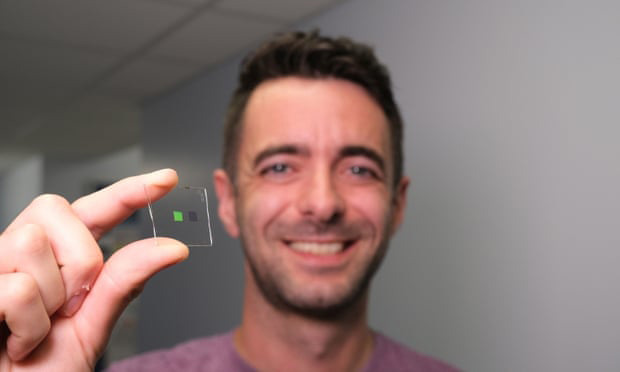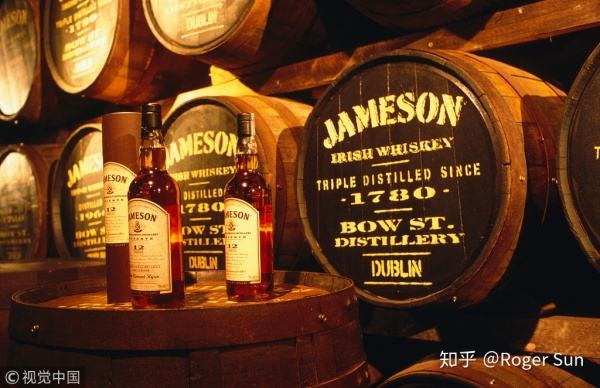科学家造出可以鉴别威士忌的“人工舌头” Scientists develop 'artificial tongue' to detect fake whiskies
中国日报网 2019-08-12 09:02

买威士忌担心买到假货?不如来试试苏格兰科学家发明的新型“人工舌头”,不但可以鉴别真假,还能鉴别年份。科学家表示,用来识别咖啡、果汁等饮料也没问题,还能试毒和监测河流水质。

Being palmed off with a young whisky when expecting an 18-year-old single malt can be a glass-half-empty moment. But now scientists have developed an “artificial tongue” that might make such skulduggery a thing of the past.
在满怀期待地品尝十八年陈酿单一麦芽威士忌时,喝到的却是一杯当年的新货,实在是件令人沮丧的事情。现在,科学家们研发出了一种“人工舌头”,可以让这种烦心事儿成为过去时了。
palm off: 拿仿品哄骗
skulduggery[skʌl'dʌɡəri]: n. 作假;欺诈;诡计
The team, based in Scotland, say their device can be used to tell apart a host of single malts – a move they say might help in the fight against counterfeit products.
这个苏格兰的团队声称,他们发明的装置可以用来区分很多种单一麦芽威士忌——这样就可以打击那些假货了。
"You could train your particular ‘tongue’ to know what one of these whiskies ‘tasted’ like, so that when the fake stuff came along it could identify it and when the real stuff came along it could confirm that it was the real stuff,” said Dr Alasdair Clark, the lead author of the research from the University of Glasgow.
来自格拉斯哥大学的阿拉斯代尔·克拉克博士是这项研究的主要作者,他说:“你能训练一种特别的‘舌头’,让它了解某一种特定的威士忌的味道,然后当它尝到假货的时候就能鉴别出来,尝到真货的时候也能确认一下。”
Clark said the technology could be incorporated into a small, portable device and have a wide range of applications, from identifying poisons to environmental monitoring of rivers.
克拉克说,这项技术可以整合进一个很小的便携装置中,应用范围也非常广泛,从试毒到监测河流水质都能干。
portable['pɔrtəbl]: adj. 手提的,便携式的;轻便的
"Initially we thought of it more for sort of production line, quality control maintenance, [for example] if you are an apple juice company and you want to make sure that the apple juice you make on Tuesday is the same as the one that you made last week,” said Clark.
“最早我们是想把这项技术用在生产线的质量控制上的,比如,你开了家生产苹果汁的公司,那你就得保证这周二生产的果汁和上周生产的尝起来是一样的,对吧?”

Writing in the journal Nanoscale, the team describe how their artificial tongue is based on a glass wafer featuring three separate arrays, each composed of 2 million tiny “artificial taste buds” – squares about 500 times smaller than a human taste bud, with sides just 100nm long.
研究团队在《纳米尺度》期刊上发表了文章,描述了他们的“人工舌头”是如何搭建在一块玻璃薄片上的。这个玻璃片有三组独立的阵列,每一组都包含200万个正方形的微型“人造味蕾”——每个边长只有100纳米,是人类味蕾大小的五百分之一左右。
wafer['wefɚ]: n. 圆片,晶片;薄片,干胶片
There are six different types of these squares in the device, three types made from gold and three from aluminium. Each of the three arrays contain one type of gold and one type of aluminium square.
设备中有六种不同的“方块”,三种由金制成,另外三种由铝制成。每一个阵列都含有一种“金方块”和一种“铝方块”。
When light is shone on an array, it interacts with the electrons at the surface of the squares, resulting in dips in the reflected light which can be measured. These dips appear at slightly different wavelengths depending on which type of square the light interacts with.
当光照到一个阵列上时,会与这些方块表面的电子相互作用,造成可以检测到的反射光降低。根据与光相互作用的方块种类不同,这些反射光的强度下降反映在略有不同的波长上。
Crucially, these dips shift depending on the liquid surrounding the arrays. The upshot is that each liquid gives rise to its own “fingerprint” of measurements. That means the device can be used to tell apart different liquids – and even identify them if they have been recorded before – without revealing their makeup, rather like our own tongues do.
但更关键的是,这种反射光的下降会随着阵列周围的液体不同而变化。结果就是每种液体都会产生一种属于自己的“指纹”。这样设备就能用来区分不同的液体了,如果液体特征之前被记录过,那么这个“舌头”就能把它认出来。但其实它并不知道这个液体里面到底有些什么——就和我们自己的舌头一样。
upshot['ʌpʃɑt]: n. 结果,结局;要点
"Your tongue can’t tell you what is in black coffee, but it knows what black coffee tastes like,” said Clark.
克拉克说道:“我们的舌头也不知道黑咖啡里有什么,但是它能尝出来那就是一杯黑咖啡。”
While this “artificial tongue” is not the first to be made, the team say its arrangement of artificial tastebuds is a step up from previous approaches, making the device smaller and speeding up information gathering.
尽管这不是世界上第一个“人工舌头”,但研究人员声称,他们的人工味蕾设计比以往的设计都更进一步——装置更小,收集信息也更快了。
To test their device, the team covered their “artificial tongue” in seven different single malt whiskies in turn, as well as water, 40% vodka, and ethanol in water.
在测试中,研究人员把“人工舌头”放到了7种不同的单一麦芽威士忌、水、40度的伏特加以及酒精里。
ethanol['ɛθənɔl]: n. 乙醇,酒精
The team found that the device produced a different pattern, or fingerprint, of results for each of the whiskies, allowing them to tell apart a range of drams including 12- and 18-year-old samples of Glenfiddich, 10-year-old Laphroaig and Glen Marnoch’s single malt Rum Cask. The team suggest this is due to tiny differences in the presence of various components – aromatic chemicals produced plants such as vanillin and terpenes.
研究团队发现,“人工舌头”给每种威士忌都生成了不同的“模式”,或者指纹,让研究团队能够区分出12年和18年的格兰菲迪、10年的拉弗格和格伦·马诺奇的单一麦芽朗姆酒样品。研究人员指出,这种区别来自于不同威士忌中的各种芳香化合物成分,比如香兰素和萜烯的微小差别。
"Although [the whiskies’] chemical compositions are pretty similar, the way that we have designed the experiment means that we can still separate them out as separate entities,” said Clark.
克拉克说:“尽管组成这些威士忌的化学成分非常相似,但研究人员设计的实验方法还是能把它们区别出来。”
来源:卫报、煎蛋网
编译:丹妮























 英语点津微信
英语点津微信 双语小程序
双语小程序












